Panopticon Prisons
Monday, 4th February 2008 by Rob
Originally conceived by the philosopher Jeremy Bentham in 1785, the panopticon was intended to be a type of prison that allowed the guard to observe any of the inmates without them knowing if and when they were being watched. The design features a central platform surrounded by a ring of cells - thus enabling a clear view of every prisoner.
A panopticon was never built in Bentham's lifetime, but the idea was revived many years later for the design of Statesville Correctional Centre in Crest Hill, Illinois. Opened in 1925 it has two 'roundhouses', and is the only working example of a panopticon in the United States. Here's a great photo which clearly illustrates what the interior is like.
Although genuine panopticons are very rare, outside of the US there are a few more for us to see.
The Presidio Modelo on the Isla de la Juventud in Cuba was directly inspired by Statesville, completed in 1931, and remains one of the best examples of Bentham's concept. Originally holding up to 6000 prisoners, its most famous inmate was probably the current President of Cuba, Fidel Castro, who was held here between 1953 and 1955. The last prisoner was released in 1967 however, and it is now a national museum - this photo shows how it looks inside today.
Chi Hoa prison in Ho Chi Minh City, Vietnam, is an outdoor version of the panopticon, but still has the central observation tower and cells ringed round it. During the Vietnam War, the prison was used to hold Viet Cong members, and still serves as the main correctional facility for the city.
Finally, Holland actually has three panopticons - in Haarlem, Breda and Arnhem. Designed by Willem C. Metzelaar, Haarlem's domed prison has four floors of cells, and was completed in 1901.
Merzelaar's father was the architect for Breda and Arnhem, which perhaps explains the similar style of the three buildings. The Dutch government refurbished these prisons in 1979, choosing to remove the central observation platforms, but keeping the rings of cells intact.
Wikipedia has more on panopticons, Jeremy Bentham and the Separate System.
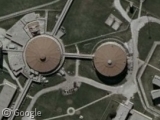
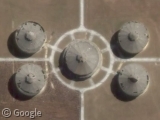
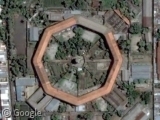
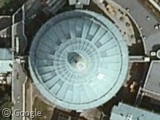
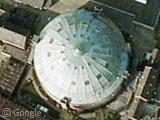
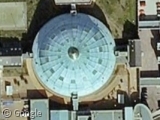

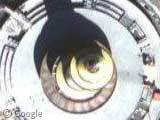


First crashes, now prisons?! What’s up with this guy?
I joke! Excellent article and a really unique topic. Great work you maverick rebel!
You have a french’s example : rue de l’abreuvoir, 79000 niort, france With Bird’s eye and Live Search Maps.
Statesville has a storied history, or so I recall. I was certain a movie was filmed there. After some digging I found that Oliver Stone’s “Natural Born Killers” had some scenes there (can’t remember which ones, however). After some further searching, I came across this NY Times article from 2001 that suggests the Illinois state prison in Joliet was going to be closed in favor of a new prison in Statesville.
http://query.nytimes.com/gst/fullpage.html?res=9C00E0DC1231F935A15751C1A9679C8B63&sec=&spon=&partner=permalink&exprod=permalink
Doing a further search, I see that the prison is still open and a new expansion is finished by not in operation. I guess Illinois has gotten their crime problems under control.
http://www.idoc.state.il.us/subsections/facilities/information.asp?instchoice=sta
“allowed the guard to observe any of the inmates without them knowing if and when they were being watched”
I don’t understand this, surely the guard standing atop his central platform would be in plain sight to the inmates? Am i missing something or is it simply the idea that if a guard was facing you he might be looking at any neighbouring cell and not you?
@Chet – Bentham’s idea was to have ‘venetian’ style blinds over the windows of the observation tower, while more modern versions use one way glass. This photograph from the post shows that bright lights are used not only to aid observation but to disorientate those trying to see the tower.
The brilliant thing is that most of the time nobody is watching you, but because you never know you are much less likely to misbehave.
This reminds me of the “Rotary Jail” which is now the Old Jail museum in Crawfordsville, Indiana, US. There were two stories of jail cells (four on each level) arranged in a cylinder on a turntable. There was only one entrance to the jail, so to get access to a cell, the guard would turn a crank to move the cylinder to the cell he wanted and then he could open the door. Select the “Old Jail Museum” from this web site.
http://www.chicagopublicradio.org/programs/848/series_features/848_coolspots.asp
to see more information about it.
Doesn’t look like that Chicago Public Radio link is active for the old jail. If you go to http://www.thinkbluemarketing.com/visitors/museums.html and then click Old Jail along the right side, you’ll get the info.
“The rotary cellblock consists of a two-tiered turntable divided into pie-shaped wedges, with a total of 16 cells. The turntable is housed within a stationary steel cage with one opening per story.
The jailer would simply rotate the mechanism to bring a particular cell to the opening, and in this way, prisoners were put into and let out of the cells. The turntable remained in operation until 1939.”
Aha, thanks Rob. That makes sense now, i was sure i was missing something
The earliest of these ever built in the U. S. was Eastern State Penitentiary in Philadelphia, PA.
There is one panopticon building in Lisboa, Portugal built in 1896 (XIX century). It was designed as the Security Pavillion on the Miguel Bombarda’s Psychiatric Hospital and it is used today as the Hospital’s Museum. You can find more here: http://www.insarj.pt/sites/INSA/Portugues/MuseuSaude/itenerarios/Documents/HospitalMiguelBombarda1.ppt
And here is the coordinates:
38º43’35.04” Nort 9º08’29.80” West
High Security Pavillion, Hospital Miguel Bombarda, Lisboa, Portugal, Europe.
Pity is that the central vigillance tower was destroyed decades ago. I went there last week and it’s an amazing building!